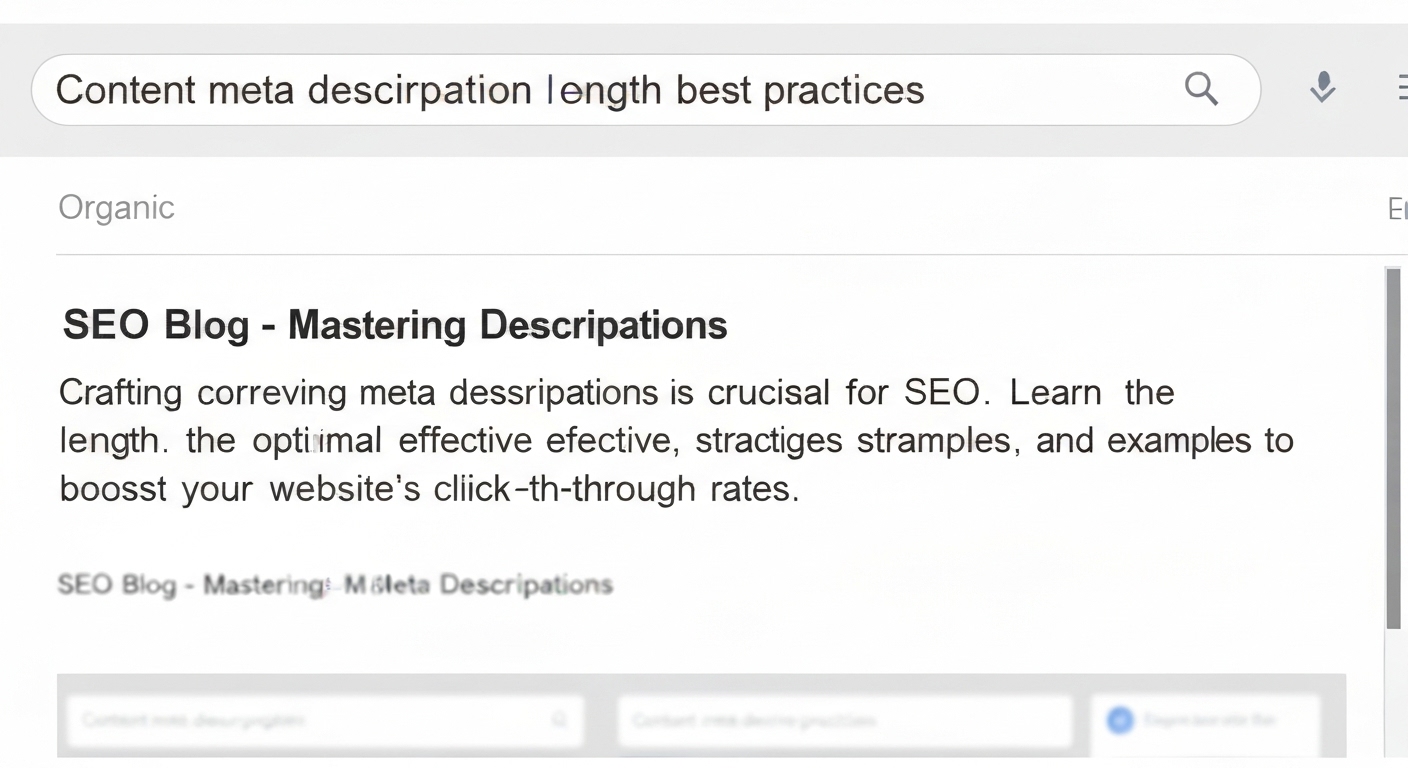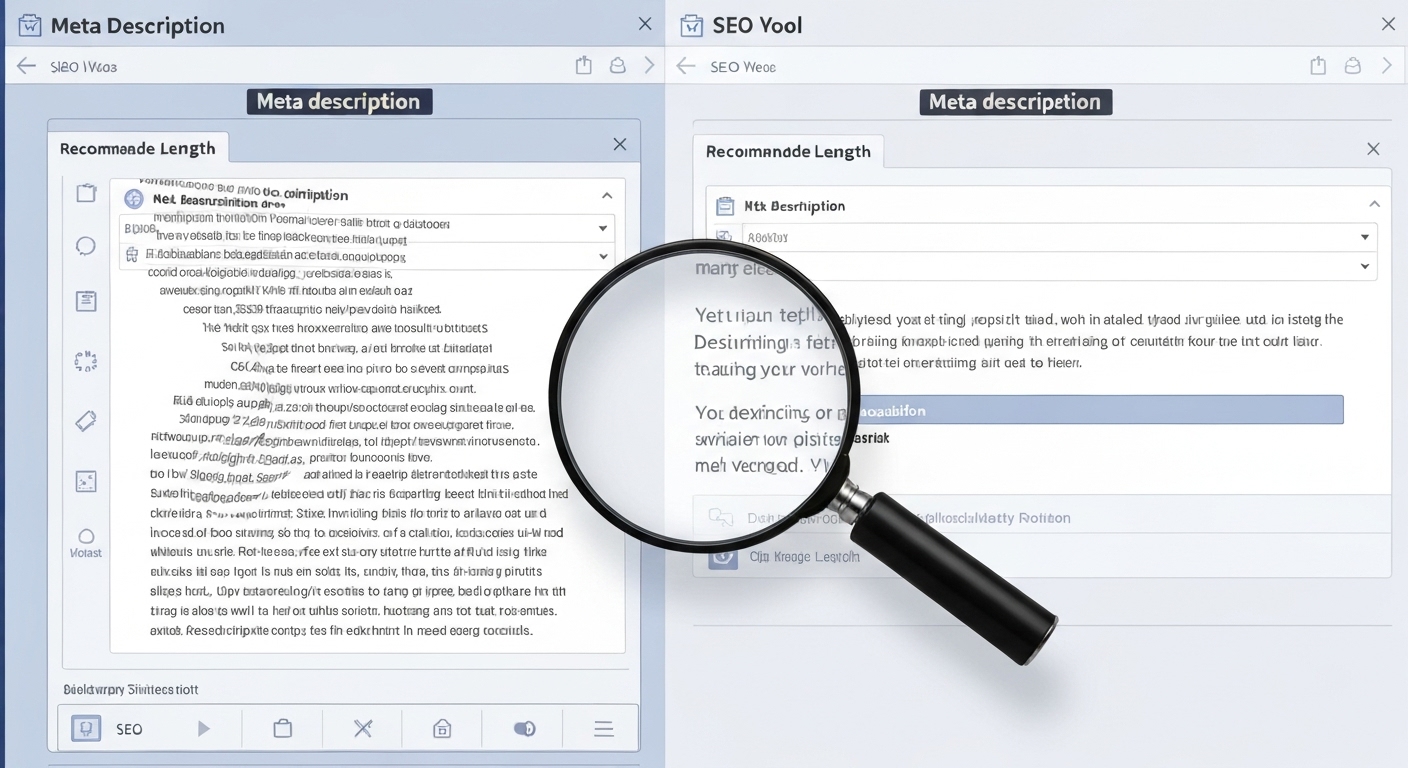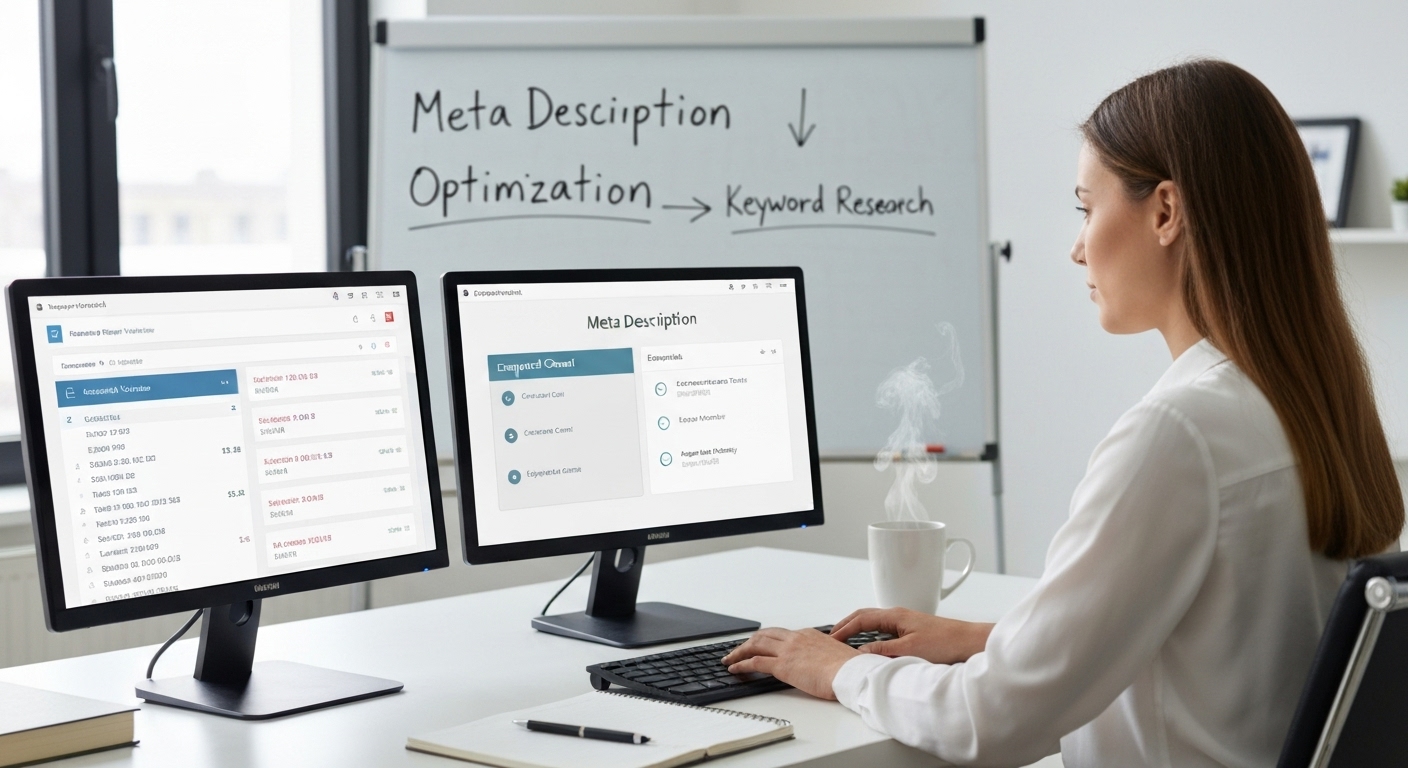Meta Description Length Best Practices : Boost Your SEO
Meta description length best practices are crucial for improving your website’s visibility in search engine results pages (SERPs). A well-crafted meta description can significantly increase your click-through rate (CTR) and drive more organic traffic to your site.

Understanding Meta Descriptions and Their Importance
A meta description is a short summary of a webpage’s content. It appears in the search results beneath the page title. While meta descriptions are not a direct ranking factor, they play a vital role in attracting users to click on your link. They act as your website’s advertisement in the search results.

Why are Meta Descriptions Important?
- Improved Click-Through Rate (CTR): A compelling meta description can entice users to click on your link over others.
- Better User Experience: A clear and accurate description helps users understand what to expect on the page.
- Brand Awareness: Meta descriptions provide an opportunity to showcase your brand’s voice and value proposition.
- Search Engine Understanding: Although not a direct ranking factor, a well-written meta description can help search engines better understand the content of your page.
Meta Description Length Best Practices in 2024
The ideal meta description length has evolved over time. Google adjusts the length of snippets displayed in search results, so staying up-to-date is essential.

What is the Optimal Length?
Currently, the recommended meta description length is between 150-160 characters. While Google doesn’t have a fixed character limit, it truncates descriptions that are too long. The goal is to provide enough context to attract clicks without getting cut off.
How to Write Effective Meta Descriptions
Beyond length, several factors contribute to an effective meta description.
- Include Target Keywords: Incorporate relevant keywords to signal relevance to search engines and users.
- Write Compelling Copy: Use action-oriented language and highlight the unique value proposition of your page.
- Match Page Content: Ensure the meta description accurately reflects the content of the page. Misleading descriptions can lead to high bounce rates.
- Use a Clear Call to Action: Encourage users to take action, such as “Learn More,” “Shop Now,” or “Get Started.”
Practical Tips for Meta Description Optimization
Implementing meta description optimization strategies can significantly improve your SEO performance.
Keyword Research for Meta Descriptions
Conduct thorough keyword research to identify the most relevant terms for your target audience. Use these keywords strategically in your meta descriptions.

Snippet Optimization for Improved CTR
Focus on creating snippets that stand out in the SERPs. Use unique and engaging language to capture users’ attention. Avoid generic descriptions that blend in with the competition. Remember, SEO best practices are essential.
Testing and Iteration
Continuously test and refine your meta descriptions to identify what works best. Monitor your click-through rates and make adjustments as needed. A/B testing can be a valuable tool for optimizing your snippets. You can track these metrics using tools like Google Analytics.
Consider utilizing tools available on flashs.cloud to assist in SEO analysis.
Common Mistakes to Avoid
Certain practices can undermine the effectiveness of your meta descriptions. Be sure to steer clear of these common pitfalls.
Duplicate Meta Descriptions
Avoid using the same meta description for multiple pages. Each page should have a unique description that accurately reflects its content. Duplicate descriptions can confuse search engines and dilute your SEO efforts.
Keyword Stuffing
Resist the temptation to stuff your meta descriptions with keywords. This can make your descriptions sound unnatural and spammy, which can deter users from clicking. Focus on writing clear, concise, and engaging copy.
Generic or Missing Meta Descriptions
Don’t leave your meta descriptions blank or use generic descriptions that don’t provide any real value. A well-crafted meta description is an opportunity to showcase your page’s content and attract clicks.
For additional information on SEO best practices, consider consulting resources like USA.gov.
The Future of Meta Descriptions
As search engine algorithms continue to evolve, the role of meta descriptions may also change. However, the fundamental principle of providing a clear and compelling summary of your page’s content will likely remain important. Staying informed about the latest trends and best practices is essential for maintaining a competitive edge.

The Role of AI in Meta Description Generation
Artificial intelligence (AI) is increasingly being used to generate meta descriptions automatically. While AI can be a valuable tool, it’s important to ensure that the generated descriptions are accurate, engaging, and optimized for your target audience. Human oversight and refinement are still crucial for achieving the best results.
Adapting to Google’s Algorithm Updates
Google frequently updates its search algorithm, which can impact the way meta descriptions are displayed and used. Staying informed about these updates and adapting your strategies accordingly is essential for maintaining optimal SEO performance.
Conclusion
Mastering meta description length best practices is an ongoing process. By understanding the principles outlined in this guide, you can create compelling snippets that attract more clicks, improve your SEO performance, and drive more organic traffic to your website. Remember to focus on providing value to users and accurately representing your page’s content.
HOTLINE
+84372 005 899


